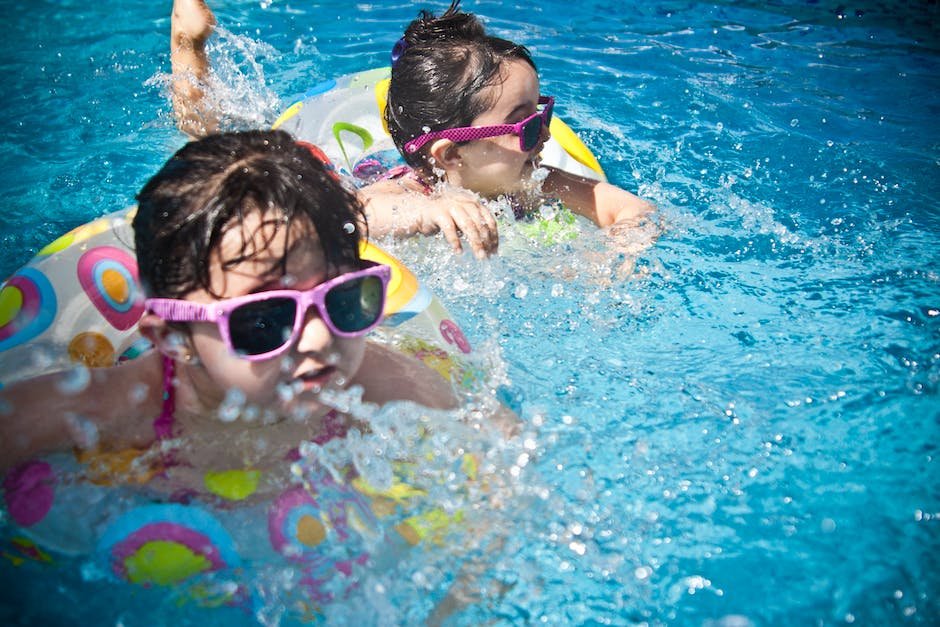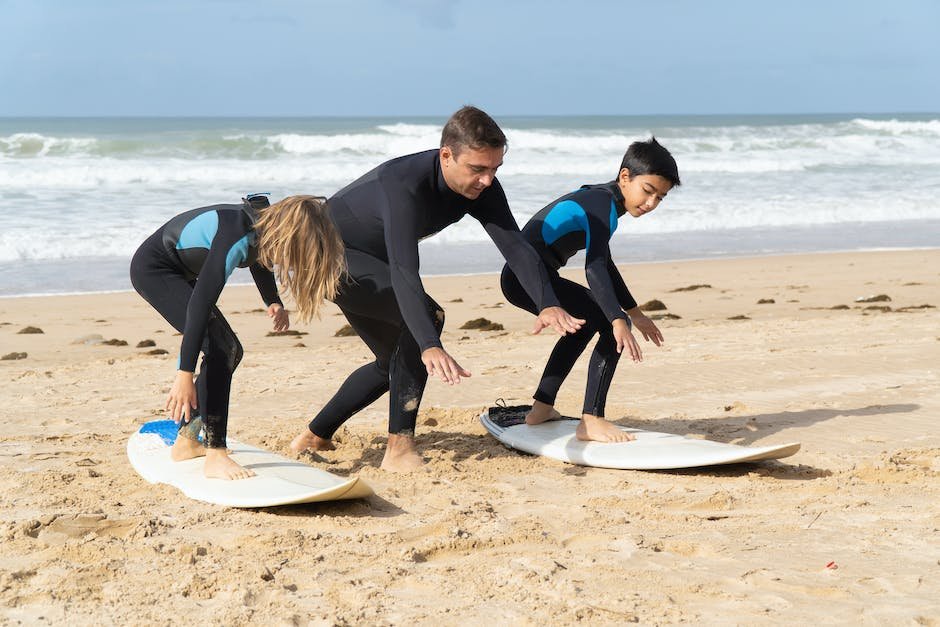
Children with autism spectrum disorder (ASD) carry with them a constellation of gifts and challenges, uniquely shaping their interactions with the world. Among these interactions, water has a captivating pull—its sensory experience, the freedom embodied in its fluidity, and the weightlessness of being submerged. Yet, behind this allure lurks a silent threat; for children with ASD, bodies of water can pose significant risks. Often underestimated, these risks are heightened due to wandering behaviors, sensory processing issues, and the very attractions that draw children towards water. Through a proactive lens, this exploration begins by shining a light on the critical need for awareness and understanding of how water safety intersects with autism.
Understanding the Risks
Unlock the Mystery: Understanding Why Water is a Unique Risk for Children with Autism
There’s something about water that captivates the heart of a child – its shimmering surface, the way it splashes, and its soothing sounds. But, when it comes to children with autism, their attraction to water comes with heightened risks that tug on every parent’s protective instincts. Understanding why these risks exist is crucial in safeguarding our sweethearts. So, let’s dive into this important topic, so we can keep our children with autism safe, happy, and thriving.
One of the striking characteristics of children with autism is their sensory processing. Water, being a sensory-rich experience, can be incredibly alluring. It’s a haven for them – a place where they can escape sensory overload from the world around them and enjoy the calming, even pressure that water provides. The way it envelops them in a gentle hug can offer a comfort like no other.
But here’s where caution needs to lace that comfort; these very sensory experiences can make water not just alluring, but all-consuming. Children with autism might be so drawn to the sensory pleasures of water that they can become unaware of their surroundings, leading to a higher risk of wandering off towards bodies of water. As parents and caregivers, it’s vital to recognize this attraction and take proactive steps to prevent unsupervised access to water areas.
Communication is another puzzle piece to consider. Many children with autism have difficulties with verbal communication and might not be able to effectively express their needs or understand safety instructions related to water. This makes it harder for them to comprehend danger and react accordingly in critical moments.
Furthermore, the water safety skills that many of us learn almost as second nature, like swimming and treading water, may not come as easily to children with autism. Difficulty with motor skills can make learning these life-saving techniques more challenging. But with patient teaching and sometimes specialized swim instruction, these skills can be learned, providing a strong safety net.
Now, let’s address the elephant in the room – the statistics. They can be scary, showing that drowning is a leading cause of death in children with autism. But knowledge is power, and understanding leads to action. By being aware of these risks, we can create layers of protection around our children. Simple yet powerful actions, like installing fences with self-latching gates around pools, using alarm systems, and teaching our kiddos to swim, can make all the difference.
Embracing a holistic safety plan is more than a precaution; it’s a gesture of love and the pathway to freedom. It means that our children with autism can delight in the joys of water – splashing in a pool, feeling the ocean waves, or simply enjoying a calming bath – all within the embrace of safety that we’ve knitted around them.
To all the parents out there, let’s keep these points close to our hearts and minds. Let’s softly imprint them on our family’s daily rhythms, and let’s share them with our wider community. There is a village around each child, ready to nurture and protect – and together, we make that village strong.
Life’s a splash, let’s keep it safe.

Preventive Measures and Strategies
Ensuring a child-proof home extends beyond the sensory appeal and unique challenges children with autism may face regarding water—it encompasses proactive strategies to mitigate water-related incidents for all children. Drowning is a silent danger, and households with pools or bodies of water nearby must be especially vigilant. Here are specific steps parents can take to create a safer water environment for their little ones, particularly those with autism.
First, physical barriers—such as fences with self-latching gates—around pools and spas should be a non-negotiable first line of defense. Safety covers that securely cover the water’s surface when the pool is not in use provide an additional layer of protection. Ensuring these barriers are maintained and checked regularly for any signs of disrepair or malfunction is crucial.
Inside the home, safeguarding bathrooms is an often-overlooked necessity. Ensure all tubs, buckets, and even toilets have safety locks to prevent unsupervised access. For an extra measure of security, consider installing door alarms for bathroom doors or any room that contains water hazards.
When it comes to boating or enjoying time by larger bodies of water, wearing a life jacket is imperative. Invest in properly fitting, Coast Guard-approved flotation devices for children, and establish a firm rule that they are worn at all times near water. Never rely on water wings or floaties as a substitute for a life jacket—they provide a false sense of security and are not designed to prevent drowning.
Supervision is the unyielding rule when it comes to water safety. However, when dealing with children who are quick to wander, additional steps like wearing a medical ID bracelet and using trackers can speed up the search during those first critical moments of a child going missing.
Additionally, enrolling children in swimming lessons can be a life-saving investment. There are programs that specialize in teaching children with autism, focusing on their individual needs while emphasizing water safety and swim skills.
Lastly, CPR knowledge is indispensable. Local community centers often offer classes that include training for emergency situations that involve water. Being equipped with the knowledge to perform rescue breathing and chest compressions could mean the difference between life and death.
Remember, vigilance and preparation are key. By implementing these measures, parents can not only prevent water-related incidents but also nurture their child’s love and respect for water in a safe and controlled environment.

Educational Approaches and Water Safety Skills
Creating an Adapted Learning Environment for Water Safety
When it comes to teaching our beautiful children with autism how to stay safe around water, the key is to tailor the learning experience to their individual needs. An adapted learning environment takes into consideration the diverse sensory experiences and learning styles inherent to children with autism.
- Visual Aids and Social Stories: Splash into safety by integrating visual aids! Social stories that depict water safety rules can be a game-changer. These stories can break down complex concepts into manageable parts that are easier to digest for kiddos who might be overwhelmed by too much verbal instruction.
- Water Safety Social Stories: A picture can be worth a thousand words, or in this case, a lifesaver. Use waterproof books or laminated pages that depict specific safety scenarios like staying away from the deep end and always having a buddy nearby.
- One-on-One Instruction: Personalized attention is supremely important. Swimming instructors who have experience working with children with autism are a valuable asset. They can provide one-on-one instruction and take the time necessary to ensure each child understands and can follow safety protocols before moving forward.
- Structured Routine: Consistency is more than a comfort; it’s a teaching tool. Establishing a structured swimming routine can help kids predict what’s coming next, reducing anxiety and increasing their ability to focus on the lessons at hand.
- Controlled Exposure: Gradual exposure ensures that everyone gets their toes wet without being thrown in the deep end. Controlled, short sessions to introducing water play can help ease children into being comfortable with water, growing their confidence slowly but surely.
- Use of Non-verbal Cues: Sometimes, a gesture speaks louder than a command. Non-verbal cues and signals can be a universal language in the water, making it easier for children who have difficulty with verbal communication to understand and follow along.
- Sensory-Friendly Equipment: Getting geared up? Opt for snug-fitting, sensory-friendly life vests and swimwear to support children who may be sensitive to textures and compression.
- Positive Reinforcement: Who doesn’t love a gold star? Positive reinforcement, such as praise, stickers, or a favorite activity after a successful session, can encourage children to follow safety rules and enjoy their water experiences.
- Participation in Specialized Swim Programs: There’s strength in numbers. Look for specialized swim programs designed for children with autism. These programs are geared toward their unique learning needs and often include education on water safety.
- Parent and Caregiver Involvement: It takes a village – or at least a committed family. Actively participating in water safety education helps reinforce key safety rules and procedures.
- Emergency Scenario Practicing: Practice doesn’t just make perfect; it prepares. Role-playing different emergency scenarios at home can equip children with the know-how to react if they ever find themselves in a tricky situation by the water.
- Collaborative Learning with Peers: Learning is more fun with friends. Participating in group lessons with peers can be an effective motivational tool and provide a sense of unity and camaraderie.
Understanding the individual needs and learning styles of a child with autism is the lifeline for success. Weaving these strategies into water safety education creates an inclusive, safe, and fun learning environment for every child to thrive. Remember, safety isn’t a sprint; it’s a marathon. Take the time, make a splash of difference, and dive into education with a heart full of patience and hands ready to guide.

Community Resources and Support Systems
Navigating Water Safety Classes: Find the Right Fit for Your Child
For families with children on the autism spectrum, finding the right swim class can be critical. It’s not just about learning to swim; it’s about building confidence, safety skills, and making sure the environment is conducive to your child’s learning style.
Start with local organizations specializing in adaptive swim programs. These groups recognize the unique needs of children with autism and tailor their lessons accordingly. Many YMCAs, for example, offer adaptive swim lessons that are smaller, more structured, and provide a supportive and understanding atmosphere.
Additionally, reach out to the autism community for recommendations. Local support groups, autism advocacy organizations, and online forums can be excellent sources for programs and instructors who are both experienced and sensitive to the needs of children with autism. Word of mouth from other parents can lead to finding a gem of a program that may not be widely advertised.
When it comes to instructors, look for those with specific training in special needs education, especially in autism. Certifications like the American Red Cross’s Adapted Aquatics Program can indicate that an instructor has the knowledge to handle the unique challenges and provide the best learning experience for your child.
Consider also nonprofit organizations dedicated to improving water safety among individuals with autism. The National Autism Association, for instance, provides resources and tools for families, including a list of swim grant programs that might help with the cost of swimming lessons.
Technology, too, has a role to play. There are apps designed to teach and reinforce water safety rules in a fun and interactive way that may resonate with children with autism. These can be particularly useful as supplements to hands-on learning in the pool.
Let’s also remember the power of one-on-one instruction. Sometimes, it takes individualized attention to really make progress. Seeking out private lessons with an experienced special needs swim instructor can make a significant difference in your child’s comfort and capability in the water.
Finally, attending water safety events or workshops can be extremely beneficial. These events often provide hands-on activities, meet-and-greets with lifeguards, and opportunities to learn more about water safety in a community environment that is inclusive and supportive.
In off-pool times, consistently reinforcing water safety through books, videos, and everyday conversations helps keep the topic at the forefront. And remember, the journey is just as important as the destination. Celebrate every milestone, no matter how small, as your child grows more confident and safe around water.

Emergency Preparedness and Response
Continuing the journey to ensure the well-being of our children with autism around water, it’s essential to explore the robustness of a well-crafted emergency action plan.
Emergencies are unpredictable, yet proactive planning can be a lifesaver in critical moments. For parents and caregivers, being educated on prompt, efficient responses to water-related emergencies is non-negotiable.
Families should prioritize having specific action steps in their emergency plans. This can range from recognizing signs of distress in children to knowing who to call immediately. Consider laminating a step-by-step guide and posting it in a visible area, both inside near water sources and outside by any pool area.
In the unfortunate event where a child manages to bypass all safety measures, it is crucial to have a clear and practiced response protocol. A well-rehearsed search pattern for the premises plays a valuable role here. Make sure to include neighbors and nearby relatives in your action plan, so they are alert and know exactly how to react if they happen to find your child unsupervised near water.
Many children with autism respond well to visual schedules and emergency drills. Discuss and regularly practice what to do if they find themselves in water unexpectedly or if they see someone else struggling. Just like fire drills, water emergency drills can teach them to seek out an adult, not to enter the water themselves, or how to call 911 if necessary.
Technology can also be a sidekick in emergencies. GPS tracking devices designed for children with autism can send immediate alerts if a child leaves a designated safe area. Wearable devices can be particularly helpful in providing an extra layer of protection for those kids who are more prone to wandering.
Moreover, establishing a network with local first responders can ensure a swifter, more informed response to emergencies. Many areas offer programs where parents can register their children with autism with the local police and fire departments, which can be incredibly resourceful in a crisis, ensuring first responders are aware of the specific needs of the child they’re searching for.
Inviting first responders to community events or arranging visits can also help children become familiar with these local heroes. Not only does this build bridges but also diminish the fear a child may experience during an actual emergency. Plus, first responders can often provide additional insights into improving safety plans based on their experiences.
Lastly, while technology and community support provide a wonderful safety net, nothing substitutes constant supervision. For children with autism, especially those drawn to water, designate a ‘water guardian’ whose sole responsibility is to watch the children during water activities. They must understand the importance of undiverted attention—because when it comes to water safety, every second counts.
In summary, emergency preparedness in water safety is a multi-faceted approach that intersects foresight, community involvement, and relentless advocacy for the individual needs of children with autism. Echoing through the very heart of these initiatives is the unyielding commitment to safeguard the lively adventures and cherish the growth milestones, whether they are by land or by the enchanting, yet demanding, aquatic realms.

The safeguarding tapestry for children with autism is intricate, requiring threads of knowledge weaved together with strands of support. As our exploration of autism and water safety comes to a shore, we hold in our hands a collection of insights that, when implemented, create ripples of security in the aquatic environments our children navigate. Securing water sources, instilling water safety skills, rallying community resources, and ensuring emergency preparedness are not mere suggestions; they are vital lifelines that can mean the difference between peril and protection. By embracing this collective wisdom and fortifying our defenses, we create a barrier stronger than the water’s edge, ensuring that our children with autism can engage with the joys of water while remaining enfolded in the embrace of safety.




